
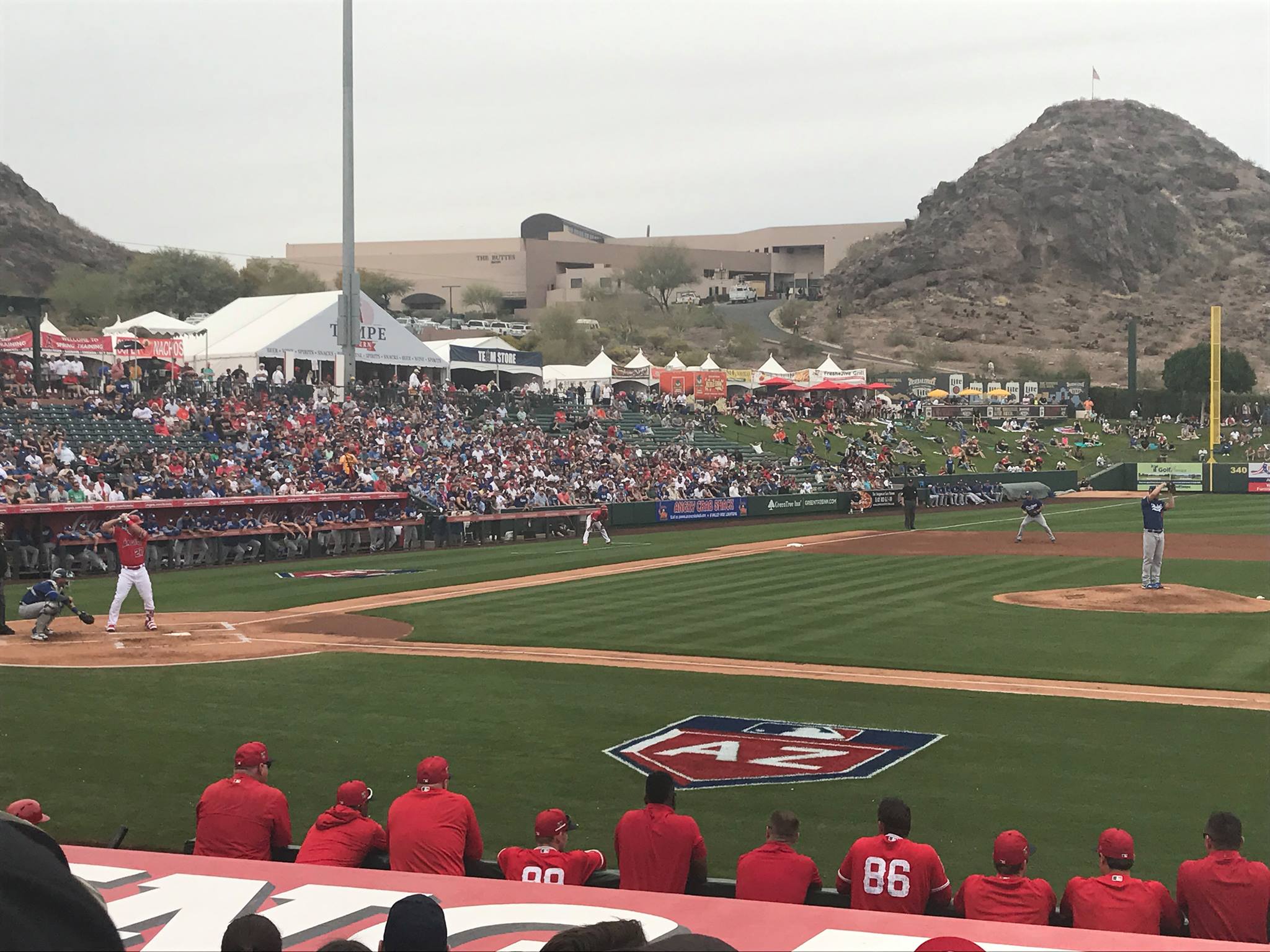
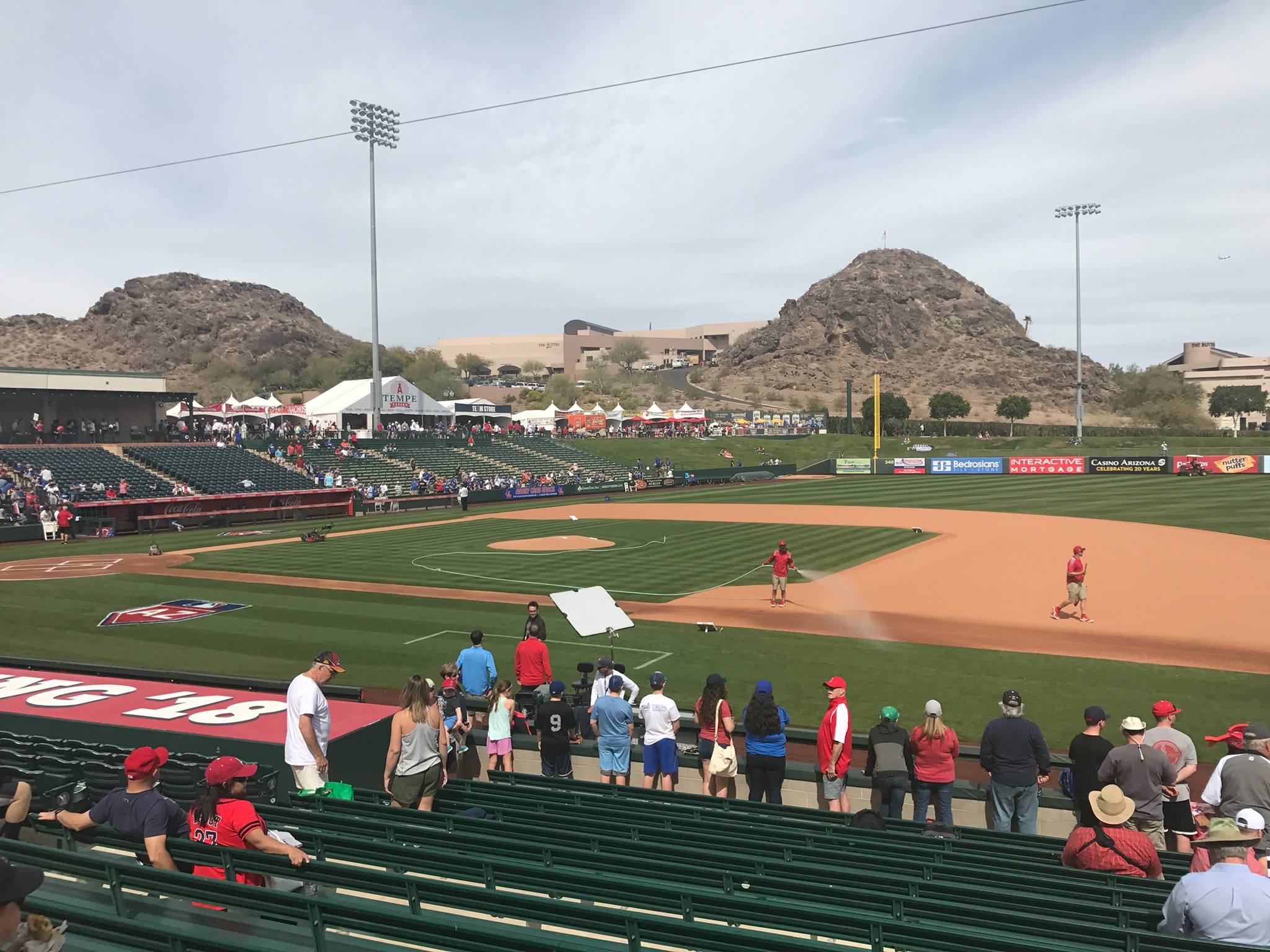

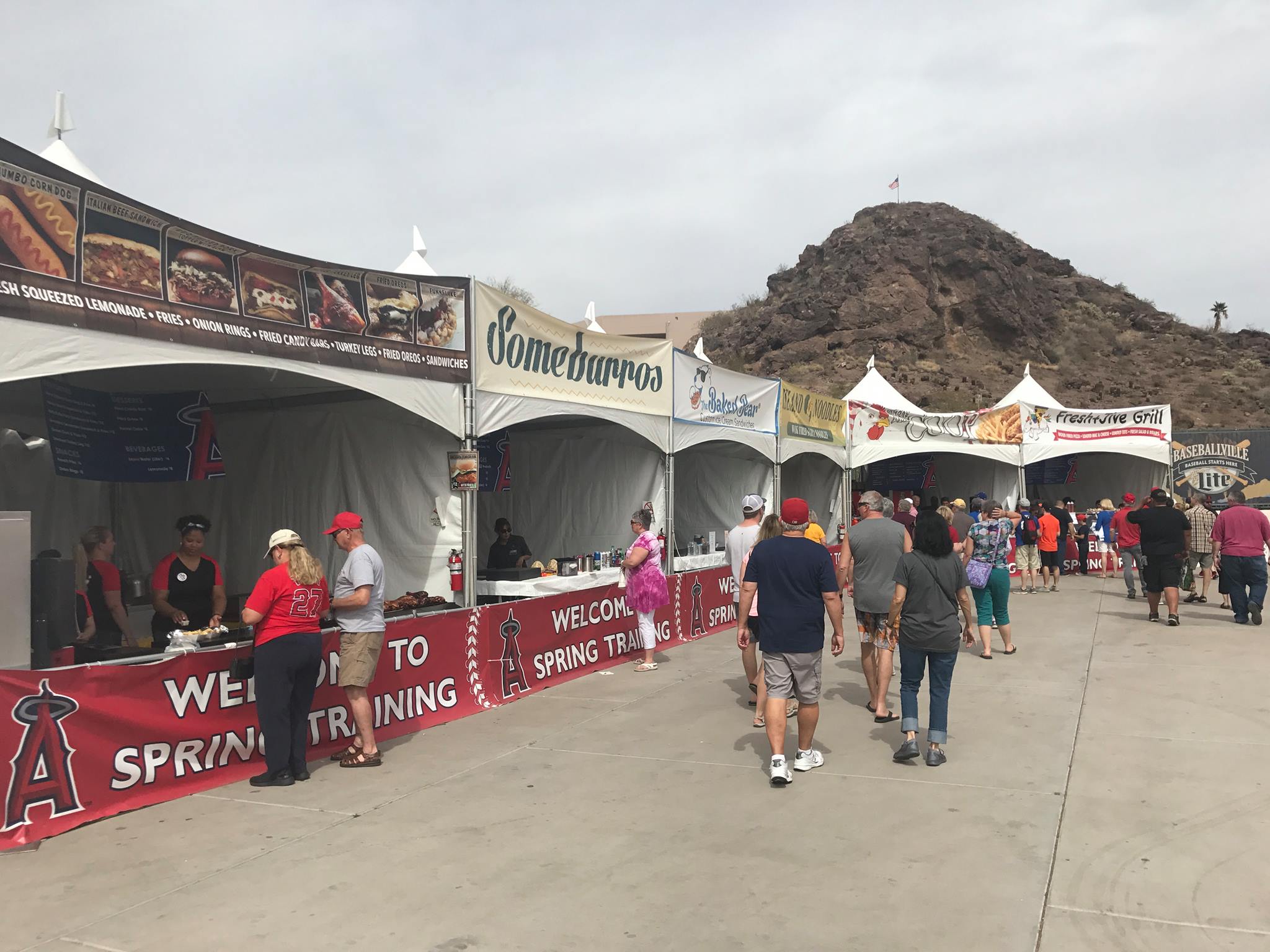
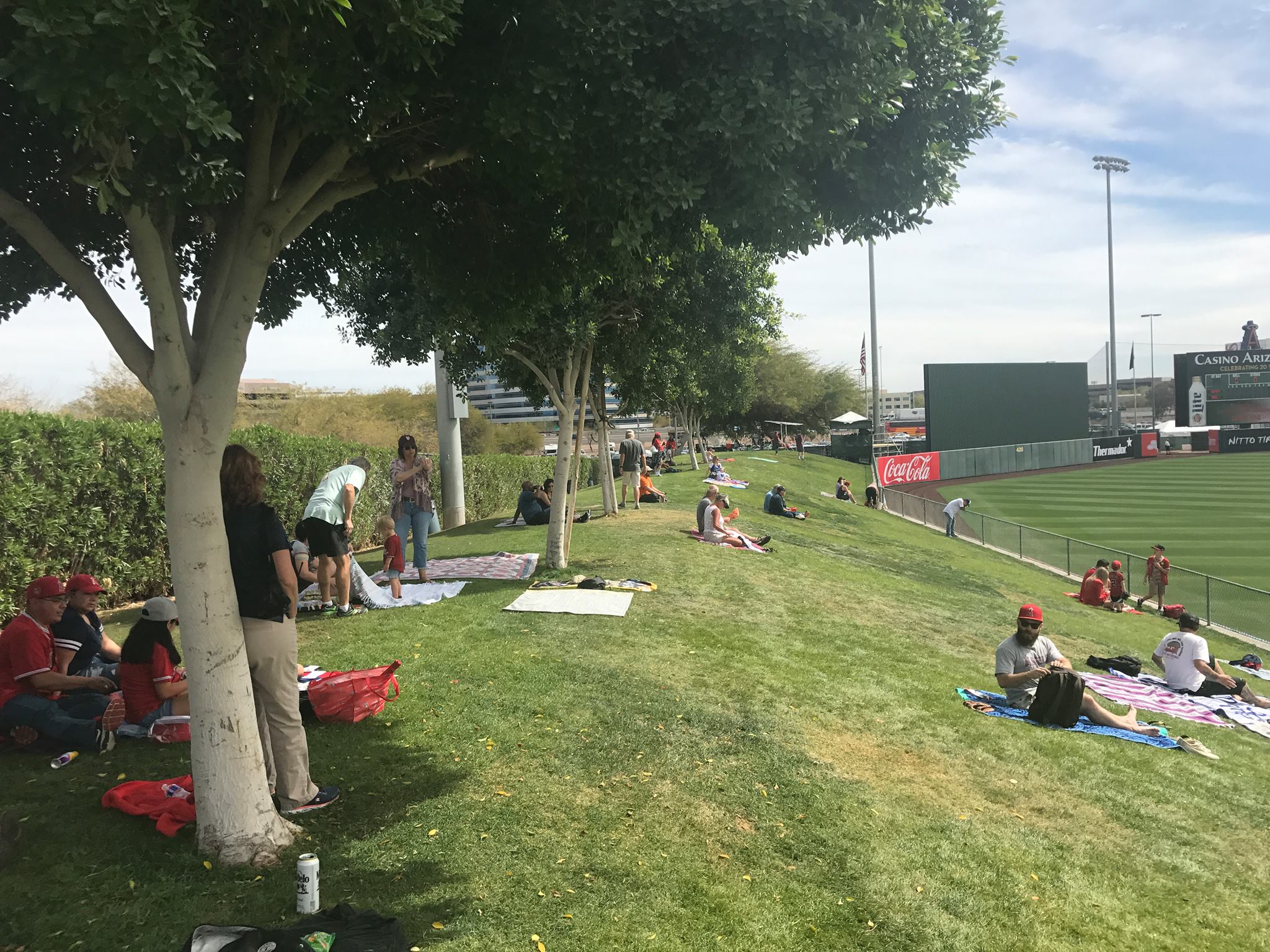
Tempe Diablo Stadium
| Setting | 7/10 | Thumb Sideways | Location/Access | 7/10 | Thumb Sideways |
|---|
| Architecture & Aesthetics | 22/28 | 1 Thumb Up |
|---|---|---|
| Exterior Design/Aesthetics | 6.5/10 | Thumb Sideways |
| Interior Aesthetics/Visuals | 14/15 | 2 Thumbs Up |
| Concourse Aesthetics | 1.5/3 | 1 Thumb Down |
| Functionality & Essentials | 13.5/25 | 1 Thumb Down |
|---|---|---|
| Sightlines | 7/10 | 1 Thumb Down |
| Seat Comfort | 2.5/5 | 1 Thumb Down |
| Concourse Functionality | 3/7 | 1 Thumb Down |
| Scoreboards/Tech | 1/3 | 2 Thumbs Down |
| Amenities & Features | 11.5/20 | 1 Thumb Down |
|---|---|---|
| Concessions | 9/10 | 1 Thumb Up |
| Premium/Group Seating | 1/4 | 1 Thumb Down |
| Social Spaces | 1.5/4 | 1 Thumb Down |
| Kids Areas | 0/2 | 1 Thumb Down |
| Atmosphere, Vibe, & Policies | 13.5/17 | Thumb Sideways |
|---|---|---|
| Ballpark Personality | 7.5/10 | Thumb Sideways |
| Fan Support | 4/5 | 1 Thumb Up |
| Ballpark Policies/Staff | 2/2 | 1 Thumb Up |
| Bonus | 8 |
|---|---|
| Final Score | 75.5 |
|---|---|
| Ranking | AZ: #10/10; Overall: #23/23 |
|---|---|
By: Cole Shoemaker
The best ballparks are often subject to overarching generalities, with people crediting a certain ballpark’s national appeal and timeless existence to one, single aesthetic attribute.
Passing fans often say, “PNC Park in Pittsburgh is only loved because of its view,” or “Oracle Park in San Fransisco is only popular because of McCovey Cove,” or “While Camden Yards was a trend setter, it is only so nice because of the warehouse.”
This is almost never true, of course. A host of factors go into making a ballpark beloved, and it takes sophisticated urban planning to translate those concepts into attractive aesthetics too.
But Tempe Diablo Stadium is a rarity, a ballpark that really is well-regarded for a single characteristic that really doesn’t have much to do with the ballpark itself: the gorgeous backdrop provided by the buttes beyond left field.
Beyond that, there isn’t much to Tempe Diablo Stadium. Despite renovations in 1993 and 2006, the ballpark might go in the pre-renovation Dunedin Stadium category (completely inadequate) if not for the interior aesthetics, given its poor showing in “objective” categories across the board. The park’s subpar functionality and lack of amenities are particularly stark when comparing Cactus League ballparks.
Tempe Diablo Stadium’s location is known for sharing similarities with the Angels’ counterpart in Anaheim, as both sit beside interstate highways and are characterized by traffic congestion. While the Buttes Marriott Resort overlooks the ballpark in the left field corner, the local scene is all office parks and traffic. Like all spring venues in Arizona, Tempe Diablo Stadium benefits from being in close proximity to other spring training sites, but the poor ingress and egress puts it near the bottom.
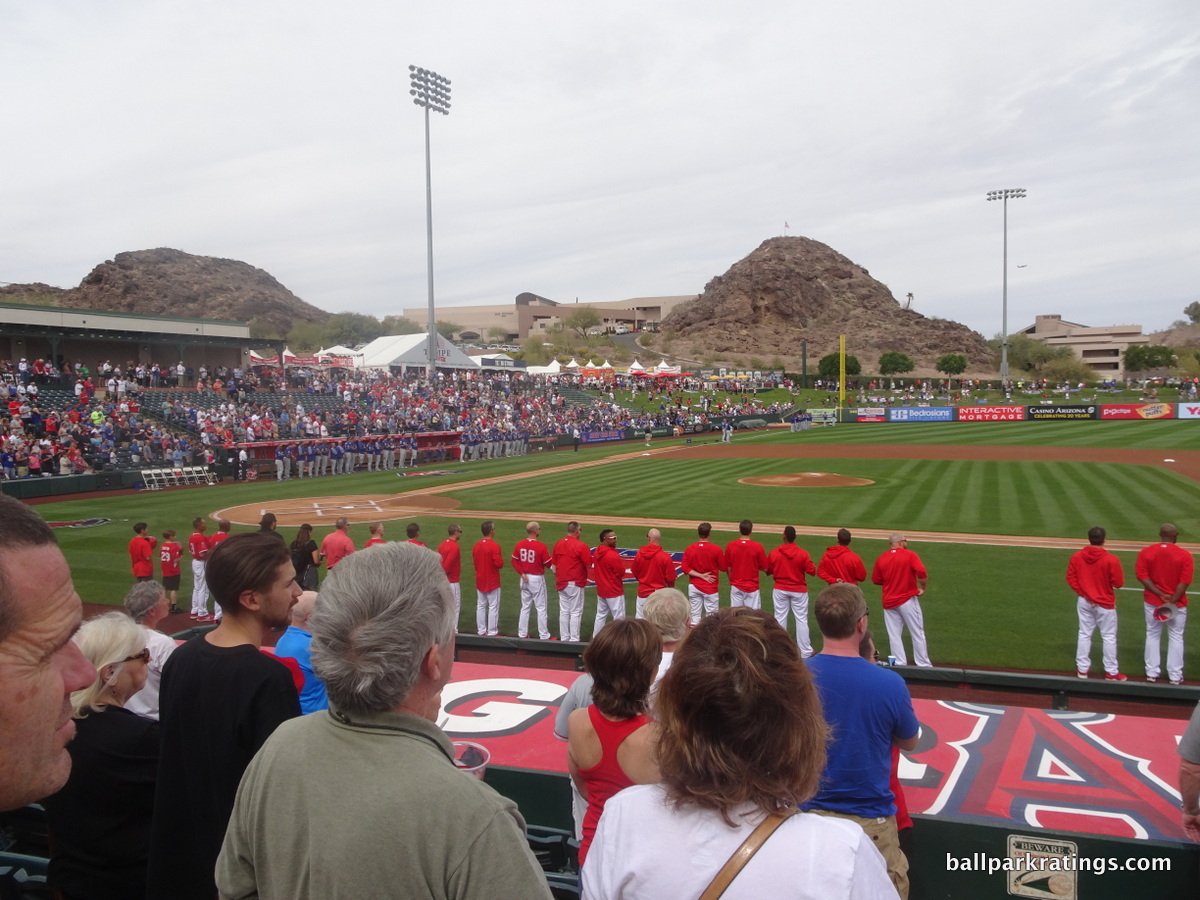
Defined by the new home plate entry, the exterior aesthetic design of Tempe Diablo Stadium was significantly enhanced by the 2006 renovation. The concrete façade is now painted in a cream-colored shade articulated with a symmetrical balance of green squares, very loosely evoking a Spanish mission style. Hardly breathtaking, but certainly no eyesore.
On the surface, the interior aesthetics aren’t attractive in comparison to most Cactus League ballparks. But similar to many ballpark “signature features,” the giant buttes beyond the periphery of left field have a funny way of being omnipresent no matter where you sit, single handedly creating a distinctive environment.
Unlike most other mountain views in the Cactus League, you will be surprised to see these hills right at the ballpark’s door step, within feet of the left field foul pole. Integrated with the Marriott, the architects deserve credit for how they were able to highlight the views in relation to the ballpark structure. A number of subtle design elements further emphasize the presence of the buttes.
So, because of these buttes, Tempe Diablo Stadium earns quite a high score in interior aesthetics.
While the ballpark has an advantage over some shared complexes, there’s not much about this place that screams “Angels” or “Los Angeles,” which is pretty disappointing. One nice touch added sometime in the 2010s: a photo essay behind home plate outlining the history of the Cactus League, Tempe Diablo Stadium, and Angels spring training. This is also one of the best ballparks for autographs.
Functionally, Tempe Diablo Stadium doesn’t fare as well, scoring the worst in the Cactus League and the worst in spring training baseball overall.
The sightlines down the right field line are terrible, with bleachers oriented past center field. Renovations added fold-down seats with cupholders around the infield (although bleachers down the lines outnumber fold-down seats), but the legroom is noticeably worse than just about any park in Florida and Arizona.
Tempe Diablo Stadium now has the narrowest concourses in spring training, as the space resembles a simple walkway until it expands down the left field line. It’s the only park in the Cactus League without a concourse encircling the entire field (i.e. “360-degree”). It’s also the only park in the Cactus League situated above street level, but it does have an advantage over some others in the Valley: the main concourse is “open,” sporting a view of the field.
Finally, Tempe Diablo Stadium is the only spring training park in all of baseball to lack a videoboard! What is this, D3 College Baseball?
The amenities are generally poor for spring training, but improvements in concessions during the 2010s have improved the score. In the right field corner, you’ll find plenty of varied cuisine along with regional specialties, such as Fresh + Jive Grill, Baked Bear, Mexican food, and the ubiquitous Island Noodles.
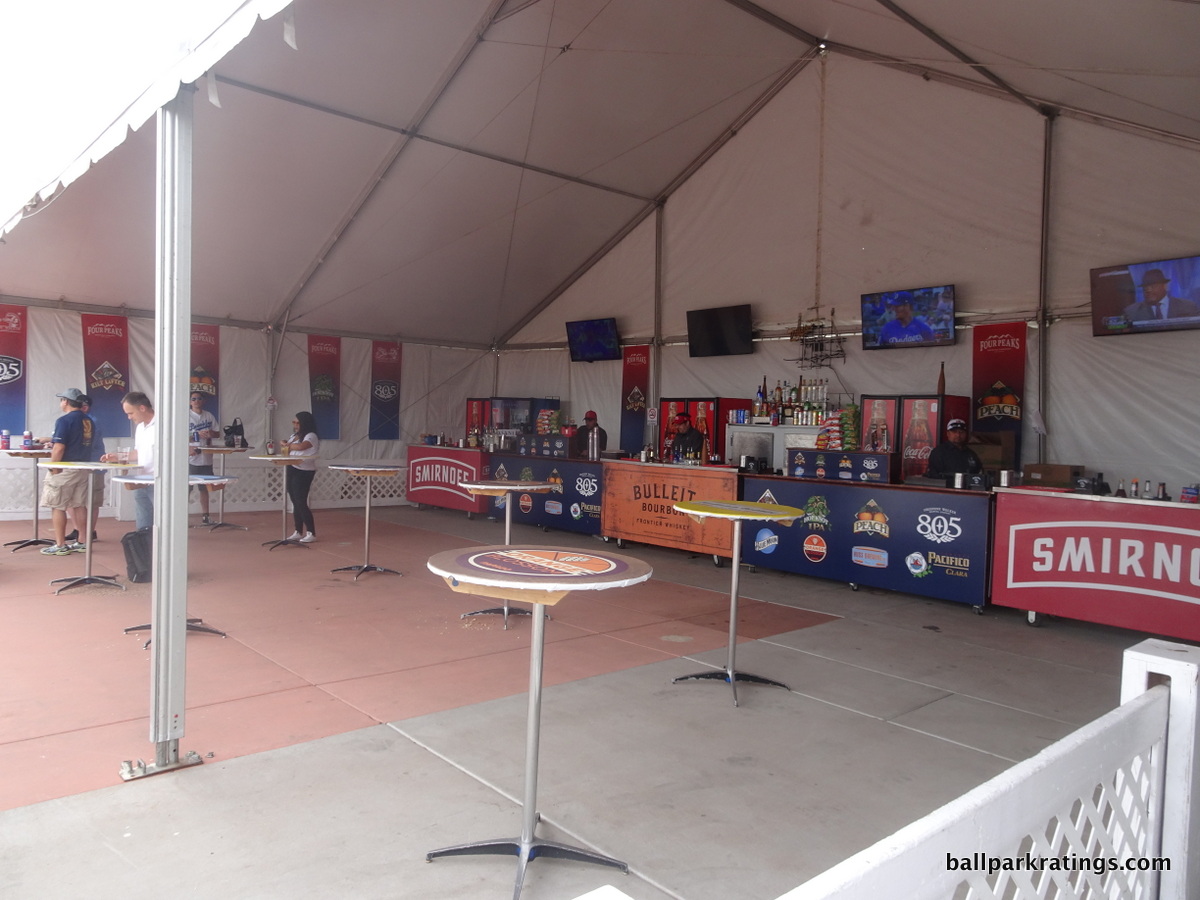
Even compared to a place like the Blue Jays’ pre-renovation Dunedin Stadium, Tempe lacks in extra amenities. The single group area (“Bud Lite Upper Pavilion”) doesn’t even have outdoor seating, nor do the indoor “suites.” While the new Tempe Tavern tent is a nice place to stand and hang out, the Angels don’t have many places to sit down on the main concourse, save the picnic area down the right field line and some other tables in left field. No kid’s area, either.
Overall, Tempe Diablo Stadium is an enjoyable park to take in a game, but it’s replete with issues inside and out. Most of the problems with the ballpark can be traced to its extremely small footprint, as there simply isn’t enough room for wide 360-degree concourses, comfortable seating, group areas, expanded concession stands, sitting areas/social spaces, and fun entertainment options. The 2006 renovations didn’t effectively address this, as most of what you see from this standpoint dates back to the 1993 renovation.
Without question, it’s demonstrably behind others in the Cactus League objectively speaking, and Tempe Diablo Stadium now ranks dead last in all of spring training. However, in contrast to the state of play in MLB, there are no “bad” spring training parks, so this is still a decent place to see a game.
With the lease expiring in 2025, there have finally been rumblings about a new round of renovations to Tempe Diablo Stadium. I expect to hear something within the next couple of years. I hope the Angels choose the renovation route rather than seeking a new ballpark, because it would be a shame to squander those beautiful views. They have certainly made the park timeless.